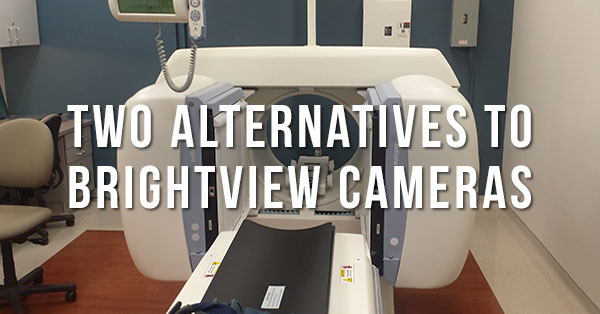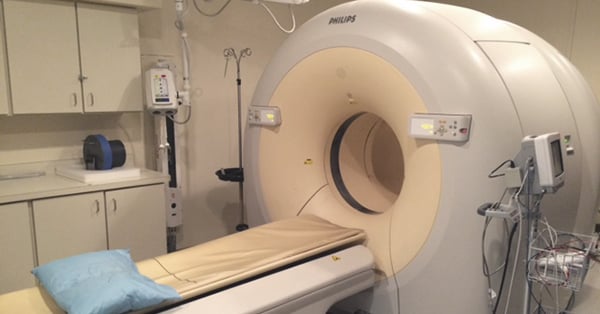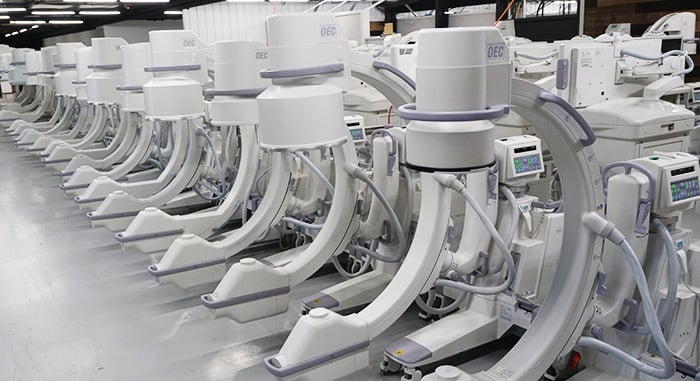
If you are a fan of Philips nuclear cameras you have probably noticed that Philips is not offering a general purpose SPECT camera, and hasn’t for several years. The last model in that line was the Brightview in 2013. The Brightview was popular, but there has been a lack of support and continuity for users. For many, it may be time to consider alternatives. In the general purpose arena, two contenders stand out: GE's Infinia and Siemens' Symbia S.
Minimum Room Size
Both the Symbia and the Infinia require a comparable amount of space to the Brightview when you consider the full nuclear camera suite. A suite typically consists of two rooms: the exam room (where the camera is), and the control room (where the workstation and operator are).
The recommended exam room size for a Brightview is 11’7” by 15’6” but places the processing equipment in the control room, increasing the latter room's size.
The recommended exam room for the Symbia is 12’ 4” by 19’, but assumes processing is in the exam room.
The Infinia has a recommended minimum of 12’8” by 18', but typical layouts are around 13’2” by 19’8”. Processing for the Infinia is also assumed to be in the exam room.
The layout and system footprint for each system may vary from installation to installation, but none of these require a dramatically larger or smaller amount of square footage than the others. If you have limited space at your facility, it is worth having a more detailed conversation with your provider about layout. Sometimes creative solutions can be found.
Table Weight Capacity
The Symbia holds the same 500lb weight capacity as the Brightview. The Infinia is not far behind with a rating of 440lbs. Either of these systems will accommodate the majority of patients, but the outliers on the heavier end would be better served by the Symbia.
Image Quality
This is another area where both the Symbia and the Infinia are comparable to the Brightview. These are systems from a similar vintage, operating at a similar level of technology. We’ve heard no complaints from any owner of any system that switching among them has resulted in a reduction in image quality.
Maintenance and Repair
Without a doubt, the engineer pool and parts are far more plentiful for both the Siemens Symbia and the GE Infinia. This is likely the result of Philips lack of continuity with the Brightview, as the earlier Philips model, the Forte, enjoyed worldwide support and parts from both Philips and 3rd parties. Presently, the Brightview is best supported for facilities that already have a service relationship with Philips.
CT Upgrades
Although at one time all three of these SPECT models were eligible to have CT scanners added to them and become SPECT/CT systems, Philips no longer offers this upgrade. GE and Siemens, on the other hand, still do. CT upgrades to the Infinia peak at 4 slices. The Symbia can be upgraded all the way to a 16-slice CT. If your plans include an eventual upgrade to SEPCT/CT, the Infinia and Symbia can provide an upgrade path to accommodate those plans.
The Takeaway
It's always nice to have a few options when you hit the market for capital equipment. The Brightview is a good SPECT system, but probably not the best pick for facilities that don't already work with Philips. Depending on your plans to upgrade and your willingness to remodel, either the GE Infinia or Siemens Symbia S could be the SPECT solution you're looking for.
To learn more about what you can expect from the Infinia and Symbia, click here to see our 2019 Nuclear Camera Price Guide.

Josh Nunez
Josh Nunez is the Director of Product Management at Block Imaging. Josh is energized by developing an understanding of each customer's unique imaging needs and overcoming the challenge of helping find them the perfect equipment match. When he is not providing PET/CT solutions he enjoys traveling, soccer, and spending time with his wife and five kids.





